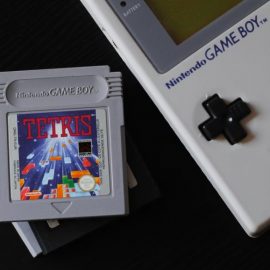

This article is an excerpt from the Shortform book guide to "Give and Take" by Adam Grant. Shortform has the world's best summaries and analyses of books you should be reading.
Like this article? Sign up for a free trial here .
What do you think is more important—talent or perseverance? Can talent overpower grit?
Psychologist and author Adam Grant believes that grit is more important than talent when it comes to determining someone’s potential. Someone can have all the talent in the world but if they don’t have the determination to develop their skills, then they’ll never improve.
Here is why grit is more important than talent, according to Adam Grant.
Talent Is Overrated. Grit Is More Important
In his book Give and Take, Adam Grant discusses why grit is more important than talent. Grant says that one reason takers and matchers tend to undervalue potential is that they overemphasize current performance and talent. After all, they want to extract value now.
Instead, research has shown that orthogonal character traits like interest and grit make a big difference. Interest drives people to develop skill in the first place. And grit keeps them pushing through setbacks and difficulties.
Both character traits can be nurtured by early teachers who are caring and patient. Teachers who can spark interest and provide positive experiences set the foundation for developing skills. Then teachers who set high expectations and push them past limits inculcate grit.
Givers tend to be these supportive teachers. Because givers signal that they care about the student’s growth, students respond better to teaching feedback and don’t question the teacher’s motives.
Furthermore, givers tend to be more gritty themselves, as they’re spurred on by the good of the group to put in more than they’d be willing to do for themselves.
Avoiding Sunk Cost Fallacy
Givers invest a lot of time in developing people. But givers don’t have a magical Midas touch – not all trainees have the talent or the grit to reach their potential.
So with limited time, how can givers focus on people with true promise? And when someone doesn’t show promise, how do they avoid the escalation of commitment to investment in a person?
Escalation of commitment is a powerful force that pushes people to throw good money after bad. There are four factors here:
- Ego threat – the biggest factor. “If I don’t keep investing, I’ll look and feel like a fool.”
- Sunk cost fallacy – you weigh your past losses in your decision making, rather than re-initiating a decision. For example, if you’ve bought 2 tickets for $200 but realize you don’t want to go to the show for 4 hours, the rational decision is to consider whether you want to waste 4 hours for $0.
- Anticipated regret – “will I be sorry that I didn’t give this another chance?”
- Project completion – a desire to follow through and finish
In many cases, escalation of commitment to a bad decision is worse for the group, but better in the short-term for the individual (in terms of disguising mistakes and massaging ego).
Takers are more vulnerable to ego threats than givers are. They’re concerned about protecting their reputation, not about the health of the organization. Cutting off a bad investment makes them look foolish and can incur big personal costs like a loss of a promotion. Thus continuing the bad investment allows the taker to continue hiding the prospect of failure.
In contrast, givers are more concerned about achieving the goals of the group than about ego. Thus, givers are more willing to admit personal mistakes and de-escalate commitment. Studies show that people make more accurate decisions when they’re deciding on behalf of others rather than themselves. Givers do this naturally.
Furthermore, takers tend to discount constructive feedback that harms their ego. In an experiment, subjects were identified as givers or takers, then made decisions on how to solve problems. All participants received a random score indicating they were below or above average, then given a suggestion to delegate more. When takers believed they were above average, they delegated 30% more often; but when they believed they were below average, they delegated only 15% as often. In contrast, givers delegated 30% more often regardless of the feedback.
By avoiding constructive feedback, takers continuously entrench into their former decisions, as doing otherwise would deflate their ego in being correct. Takers want to be the smartest people in the room. In contrast, givers care about the performance of the group and focus more on the organizational consequences of their decisions. Thus, they take in as much data and disconfirming evidence as they can to make better decisions, even at the short-term expense of their ego and reputation.
Example: Inman vs Jordan in Basketball Scouting
Give and Take uses two well-known basketball figures to illustrate the talent-developing differences between givers and takers.
Stu Inman was a basketball scout for the Portland Trail Blazers and is seen as key to building the team that won the championship in 1977. Adam Grant cites Inman’s classic giver behaviors. As a college coach, he cared about talent development and made room for gritty players even if they lacked talent. As an NBA scout, he fought common wisdom and used psychological analyses to find gritty players, rather than focusing on upfront performance. This led to picks like Bill Walton and Clyde Drexler.
They had their share of mistaken picks. But Inman was receptive to negative feedback and to admitting his mistakes. After making bad picks, other NBA teams tended to play their picks more than they should have, in an effort to prove their ego correct and out of ego-protecting denial that they had made a mistake. In contrast, the Blazers played their bad picks less than average, thus de-escalating their commitment.
In contrast, Michael Jordan, despite being the best-known basketball player of all time, was a classic taker on and off the court. While playing, he was known as being egotistical and selfish. He bristled under constructive feedback and was criticized at his Hall of Fame speech for thanking few people and excoriating his doubters.
As an executive for the Washington Wizards, Jordan made a bad first pick in Kwame Brown, who never lived up to potential. Brown’s failure meant a huge blow to Jordan’s ego. Jordan un-retired to play on the Wizards alongside Brown, and he “ritually reduced Brown to tears.” Without success, Jordan was fired from the Wizards, but he didn’t let it go. When Jordan owned the Charlotte Bobcats, he signed Brown again. The Bobcats gave Brown more minutes than ever, but he struggled to thrive. Jordan kept throwing good money after bad, unable to admit his mistake and stinging under the increasing criticisms about his management.

———End of Preview———
Like what you just read? Read the rest of the world's best book summary and analysis of Adam Grant's "Give and Take" at Shortform .
Here's what you'll find in our full Give and Take summary :
- The three reciprocity styles—givers, takers, and matchers
- Why givers are the most successful in life
- How to set up a giving culture






